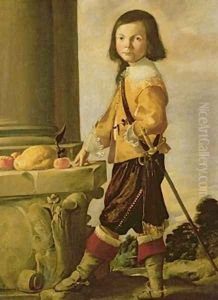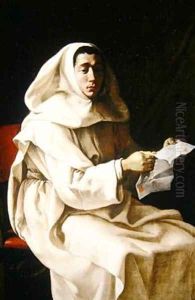Luigi (Il Genovesino) Miradori Paintings
Luigi Miradori, known as Il Genovesino, was an Italian painter of the Baroque period, active mainly in Cremona and Genoa. Born in 1605 in Genoa, Liguria, his nickname, 'Il Genovesino,' literally translates to 'the little Genoese,' reflecting his origins. Despite his significant contributions to the Baroque movement in Italy, details about his early life and training remain somewhat obscure, a common issue with many artists of his time. It is believed that he may have been a student or follower of the Sinibaldi brothers, Giovanni and Gioseffo, in Genoa, though his work also shows the influence of the more prominent Genoese painters of the time, such as Bernardo Strozzi, under whom he may have studied or been influenced by.
Il Genovesino's move to Cremona in the 1630s marked a turning point in his career. In Cremona, his style matured, and he became known for his religious works, portraits, and his adeptness at capturing the intense emotionality and dynamic movements characteristic of the Baroque era. His paintings often featured dramatic lighting effects and a vivid palette that highlighted the spiritual and emotional depths of his subjects. Among his notable works are the frescoes in the church of San Abbondio in Cremona and his contributions to the decorations of the Cathedral of Cremona and the church of Sant'Abbondio.
Despite his achievements, Il Genovesino never gained the same level of fame as some of his contemporaries, such as Guido Reni or Peter Paul Rubens, but his work was highly regarded in the regions where he was active. His paintings are characterized by a keen attention to detail, a profound sense of humanity, and a deeply felt religious sentiment. He was also known for his portraits, which capture the character and status of his subjects with insightful precision and sensitivity.
Il Genovesino's death in 1656 in Cremona marked the end of a career that had significantly contributed to the cultural and artistic landscape of northern Italy during the Baroque period. Today, his works are preserved in various Italian museums and churches, where they continue to be studied and admired for their emotional depth, technical skill, and historical value. Through his paintings, Il Genovesino has left a lasting legacy that offers valuable insights into the artistic and cultural milieu of 17th-century Italy.

